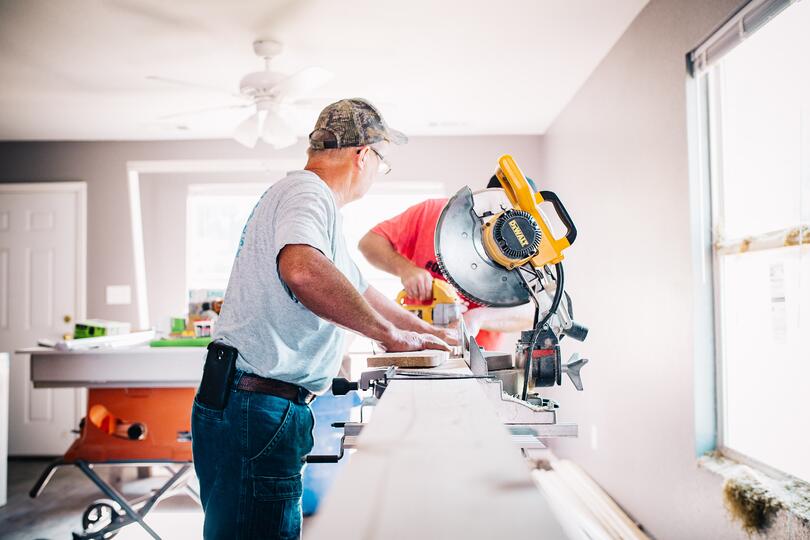
A handyman license is a must for working in Massachusetts, but what does it mean for you? What is the difference in a handyman's or construction supervisor's licence? What is a bond? And what does it mean for your customers? You need to do more than just fix your house. But where do you begin? And how do you avoid being fined?
Registration of home-improvement contractors
Applying for a Massachusetts home improvement contractor license is the first step to becoming a licensed contractor. A $150 application is required to be a licensed home inspector contractor. This fee also includes a Guaranty Fond Fee of $100. The fee for each additional employee goes up to $200. The fee rises to $500 if you have more employees than that. You must renew your license every two years once you have been licensed. The fee is $100. No Guaranty Fund Fee is required to renew your registration.
Every business that is involved in construction needs a license for a home-improvement contractor. It allows them to erect scaffolding, connect sewer lines, and utility service lines, and provide mechanical and structural service. Subcontractors, consultants, or hardscape contractors are also possible for home improvement contractors. In order to do home improvement work, contractors must hold at least two licenses according to the Massachusetts Office of Consumer Affairs. After becoming licensed, you can register your business with the Office of Consumer Affairs as a contractor in home improvement.

Home improvement contractor license
There are two types of construction licenses: the Massachusetts handyman license or home improvement contractor license. State law requires both licenses. The state law requires that applicants be at least 18 and have three years work experience in building trades. Although the work experience requirement doesn't have to be specific, many handyman license candidates are either registered home improvements contractors or construction supervisors. This work experience must total at least forty hours per week. After passing the exam, the Massachusetts Board of Building Regulation and Standards will issue a handyman's license in 30 days.
If you are going to do any construction in a residence that will house one to four families, the home improvement contractor license is necessary. While it doesn't require any testing or classroom instruction, you will need three years of experience in the workplace. These years must be completed over a period of ten years. You can subcontract to home improvement contractors but you will need a license for structural work.
Construction supervisor license
There are two types professional licensing. The Massachusetts handyman licensure and the Massachusetts construction supervisor licence are different. Three years' experience working in the construction sector is required for the latter. You do not need to have consecutive experience, but you must have 40 hours per week and be in the construction industry for at least 10 years. Additional requirements for the Massachusetts construction supervisor's license are also required. You must fill out an application, and then submit all required documents.
Open book tests are the only way to pass the Massachusetts handyman or construction supervisor license test. Online training can be completed by an instructor and self-paced. You can review each module as many times as necessary, as there are several sections in the course. Each module includes a practice quiz to gauge your understanding of the material. Below are the course materials. These materials will be sent within 1-2 business day.

Construction supervisor bond
To become a Massachusetts handyman, you'll need a handyman licence and a construction supervision bond. After passing the construction supervisor exam, you will be able to apply for a Massachusetts Tax ID. If you wish to supervise construction projects, you need to have at least three years of experience. You are typically able to supervise projects with walls of up to 10 feet tall and less than 35,000 sq. feet.
Massachusetts law requires that applicants for a handyman license must be at least 18 years old with three years of building experience. Although this experience doesn't have to be specific in nature, most handymen work under the supervision of a registered contractor or construction supervisor. After passing a written test, a handyman license may be issued in 30 days. This will allow you to work for an average of 40 hours per week. You can apply for a Massachusetts handyman license by visiting the Massachusetts Board of Building Regulation and Standards.
FAQ
Why should I hire someone to do the job instead of doing it myself.
It's a great way to save time and money by hiring a handyman. This saves you time and money. A handyman will have all the equipment and supplies necessary to complete the job correctly.
How many hours is it typical to complete a DIY project of this nature?
On average, DIY projects take between 2 and 4 hours. The difficulty and complexity of the project will affect how long it takes.
How often should I employ a handyman to help me?
It all depends upon the nature of your job. If you are looking for a quick fix, like installing a lightbulb, you may only need one handyman per week. However, if there is a lot of remodeling involved, you could probably use several handymen over the course of the project.
Statistics
- An estimate was that in 2003, the market for home maintenance and repair spending was up 14% 2001 to 2003. (en.wikipedia.org)
- “Before the pandemic, 40% of people asked how we could estimate a job when we weren't there,” Rose recalled. (inquirer.com)
- “Once the pandemic hit, that number fell to about 20%.” (inquirer.com)
- With a strong housing market, the handyman and general maintenance worker industry are expected to grow by nearly 10% in the next decade. (housecallpro.com)
- According to the U.S. Bureau of Labor Statistics, in May 2020, there are 1,357,630 handymen employed in the U.S.. (angi.com)
External Links
How To
How to Replacing a Broken Tile
Step 1: Take away the old tiles.
Take out the tiles and place them on a new flooring surface. If you plan to use these tiles later, it is important that you keep them in good condition. It's important to note which parts are missing or damaged in order to be able to find the right replacements.
Step 2 -- Choose New Tiles
Look at these different options for replacing tiles.
-
Locate a replacement tile that is the same as the one you just removed.
-
To match a tile, you can use the measurements you took after removing it. This will allow you to quickly find the right size, without having to measure again.
-
Look for various colors, patterns, textures, sizes, shapes, etc.
-
If you have a preference for grout, consider what it would be best to use. Some people prefer to use a single color, while others love mixing it up.
-
Make sure the tile you select is resistant to moisture.
-
The final thing to consider is the location of the tile. It will save you time and money if you make sure there's enough space for the proper installation.
-
Once you've decided on your tile, you can order it online or by calling your local Lowe's to place your purchase.
Step 3: Install the tiles.
You can install new tiles in the same way you did before. It's important to align them correctly in order for them to fit together.
Step 4 -- Clean Up
Make sure to clean up all debris and other materials before applying the final layer of protection material.
This will prevent dust and dirt from building up between the tiles.
Step 5 - Sand Down the Floor
After everything has been cleaned, sand it down to remove any remaining particles from the previous steps.
Step 6 - Finish Off
Apply the protective coatings once the floor is smooth. You should wait until this stage as wet paint can stain new tiles.
To protect your floors from stains, you can use "damp-and dry" products.
But it won't address every issue that might arise after installing your new tiles. You might want to add an anti-slip coating to the protective layer if there are a lot of children.
And finally, remember to leave the protective sealer on for several weeks before moving back into your home.